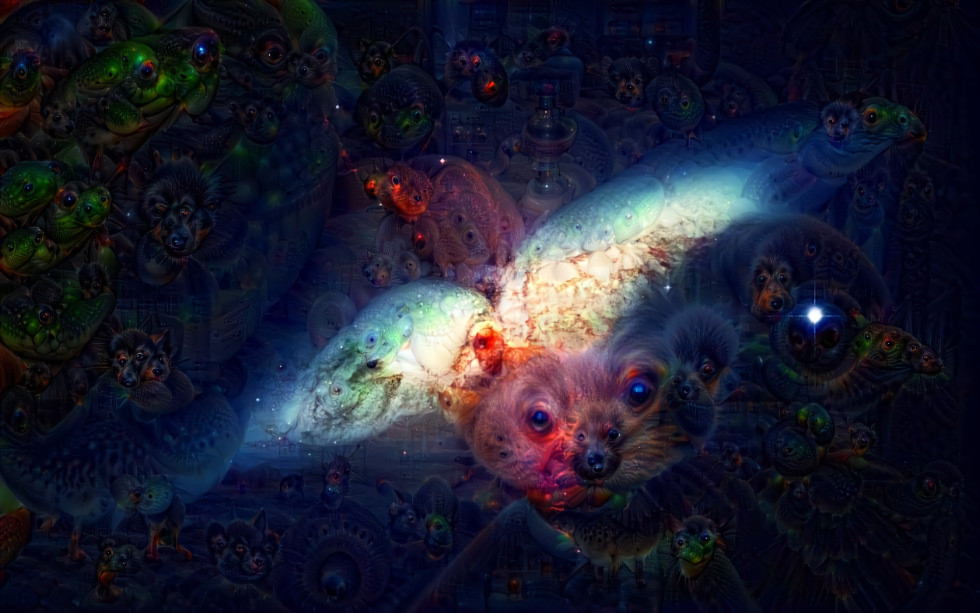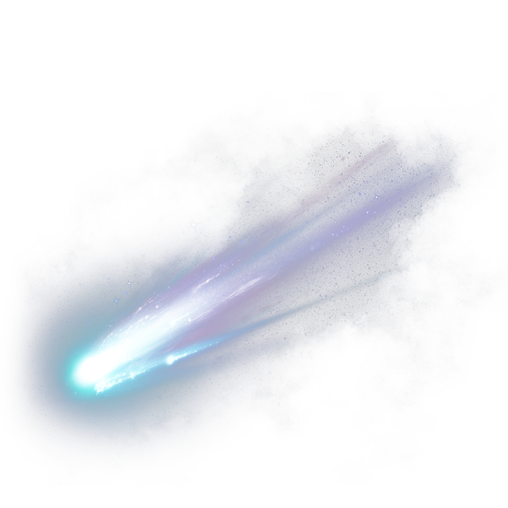Varley, T. F., Carhart-Harris, R., Roseman, L., Menon, D. K., & Stamatakis, E. A.. (2020). Serotonergic psychedelics LSD & psilocybin increase the fractal dimension of cortical brain activity in spatial and temporal domains. NeuroImage
Plain numerical DOI: 10.1016/j.neuroimage.2020.117049
DOI URL
directSciHub download
Show/hide publication abstract
“Psychedelic drugs, such as psilocybin and lsd, represent unique tools for researchers investigating the neural origins of consciousness. currently, the most compelling theories of how psychedelics exert their effects is by increasing the complexity of brain activity and moving the system towards a critical point between order and disorder, creating more dynamic and complex patterns of neural activity. while the concept of criticality is of central importance to this theory, few of the published studies on psychedelics investigate it directly, testing instead related measures such as algorithmic complexity or shannon entropy. we propose using the fractal dimension of functional activity in the brain as a measure of complexity since findings from physics suggest that as a system organizes towards criticality, it tends to take on a fractal structure. we tested two different measures of fractal dimension, one spatial and one temporal, using fmri data from volunteers under the influence of both lsd and psilocybin. the first was the fractal dimension of cortical functional connectivity networks and the second was the fractal dimension of bold time-series. in addition to the fractal measures, we used a well-established, non-fractal measure of signal complexity and show that they behave similarly. we were able to show that both psychedelic drugs significantly increased the fractal dimension of functional connectivity networks, and that lsd significantly increased the fractal dimension of bold signals, with psilocybin showing a non-significant trend in the same direction. with both lsd and psilocybin, we were able to localize changes in the fractal dimension of bold signals to brain areas assigned to the dorsal-attenion network. these results show that psychedelic drugs increase the fractal dimension of activity in the brain and we see this as an indicator that the changes in consciousness triggered by psychedelics are associated with evolution towards a critical zone.”
Varley, T. F., Carhart-Harris, R., Roseman, L., Menon, D. K., & Stamatakis, E. A.. (2019). Serotonergic Psychedelics LSD & Psilocybin Increase the Fractal Dimension of Cortical Brain Activity in Spatial and Temporal Domains. BioRxiv
Plain numerical DOI: 10.1101/517847
DOI URL
directSciHub download
Show/hide publication abstract
“Psychedelic drugs, such as psilocybin and lsd, represent unique tools for researchers in-vestigating the neural origins of consciousness. currently, the most compelling theories of how psychedelics exert their effects is by increasing the complexity of brain activity and moving the system towards a critical point between order and disorder, creating more dynamic and complex patterns of neural activity. while the concept of criticality is of central importance to this theory, few of the published studies on psychedelics investigate it directly, testing instead related measures such as algorithmic complexity or shannon entropy. we propose using the fractal dimension of functional activity in the brain as a measure of complexity since findings from physics suggest that as a system organizes towards criticality, it tends to take on a fractal structure. we tested two different measures of fractal dimension, one spatial and one temporal, using fmri data from volunteers under the influence of both lsd and psilocybin. the first was the fractal dimension of cortical functional connectivity networks and the second was the fractal dimension of bold time-series. we were able to show that both psychedelic drugs significantly increased the fractal dimension of functional connectivity networks, and that lsd significantly increased the fractal dimension of bold signals, with psilocybin showing a non-significant trend in the same direction. with both lsd and psilocybin, we were able to localize changes in the fractal dimension of bold signals to brain areas assigned to the dorsal-attentional network. these results show that psychedelic drugs increase the fractal character of activity in the brain and we see this as an indicator that the changes in consciousness triggered by psychedelics are associated with evolution towards a critical zone. author summary the unique state of consciousness produced by psychedelic drugs like lsd and psilocybin (the active component in magic mushrooms) are potentially useful tools for discovering how specific changes in the brain are related to differences in perception and thought patterns. past research into the neuroscience of psychedelics has led to the proposal of a general theory of brain function and consciousness: the entropic brain hypothesis proposes that consciousness emerges when the brain is sitting near a critical tipping point between order and chaos and that the mind-expanding elements of the psychedelic experience are caus…”
Ballentine, G., Friedman, S. F., & Bzdok, D.. (2021). Trips and Neurotransmitters: Discovering Principled Patterns across 6,850 Hallucinogenic Experiences. BioRxiv
Show/hide publication abstract
“Psychedelics are thought to alter states of consciousness by disrupting how the higher association cortex governs bottom-up sensory signals. individual hallucinogenic drugs are usually studied in participants in controlled laboratory settings. here, we have explored word usage in 6,850 free-form testimonials with 27 drugs through the prism of 40 neurotransmitter receptor subtypes, which were then mapped to 3d coordinates in the brain via their gene transcription levels from invasive tissue probes. despite the variable subjective nature of hallucinogenic experiences, our pattern-learning approach delineated how drug-induced changes of conscious awareness (e.g., dissolving self-world boundaries or fractal distortion of visual perception) are linked to cortex-wide anatomical distributions of receptor density proxies. the dominant explanatory factor related ego-dissolution-like phenomena to a constellation of 5-ht2a, d2, kor, and nmda receptors, anchored especially in the brain’s deep hierarchy (epitomized by the associative higher-order cortex) and shallow hierarchy (epitomized by the visual cortex). additional factors captured psychological phenomena in which emotions (5-ht2a and imidazoline1) were in tension with auditory (sert, 5-ht1a) or visual (5-ht2a) sensations. each discovered receptor-experience factor spanned between a higher-level association pole and a sensory input pole, which may relate to the previously reported collapse of hierarchical order among large-scale networks. simultaneously considering many psychoactive molecules and thousands of natural language descriptions of drug experiences our framework finds the underlying semantic structure and maps it directly to the brain. these advances could assist in unlocking their wide-ranging potential for medical treatment. ### competing interest statement the authors have declared no competing interest.”
Eagan-Deprez, K., & Humphreys, R.. (2005). Fostering mind-body synchronization and trance using fractal video. Technoetic Arts
Plain numerical DOI: 10.1386/tear.3.2.93/1
DOI URL
directSciHub download
Show/hide publication abstract
“Discusses the potential for acheiving in the viewer of fractal art and video a ‘fractal-viewing trance’ (fvt). the authors describe their own ‘mind-body videos’ and their methodology in animating fractals and maintain that their videos are able to affect trance-like phenomena in the viewer, arguing that they have potential applications in art, film-making and health care. they analyse the hypnosis-like ‘trance effect’ and argue that their videos can stimulate psychomimetic effects including ‘psychedelic’ imagery, comment on the tendency of the viewer to impose an identity on the fractal image, describe their use of organic colour sampling as opposed to the linear colouring models traditionally used in fractal representation, and discuss the effect and potential of the addition of music to their images.”
Outram, B., Konishi, Y., Shimbo, A., Shimizu, R., Minamizawa, K., Sato, A., & Mizuguchi, T.. (2018). Crystal Vibes feat. Ott: A psychedelic musical virtual reality experience utilising the full-body vibrotactile haptic synesthesia suit. In Proceedings of the 2017 23rd International Conference on Virtual Systems and Multimedia, VSMM 2017
Plain numerical DOI: 10.1109/VSMM.2017.8346269
DOI URL
directSciHub download
Show/hide publication abstract
“Immersive media technology such as virtual reality provides the unique opportunity to place participants in multi-sensory hyper-connected universes where auditory and visual senses are intimately connected, and worlds can be built out of fractal geometries. crystal vibes is an artistic piece that combines spatial audio, endless fractal geometries, full-body haptic vibration feedback and sound-to-colour visualisation based on empirical biological functions related to human auditory and visual perception. exhibited at sundance film festival new frontier in january 2017, and at kaleidoscope showcase vol. 2 in 10 cities across the world, in this paper we report on insights from user feedback, as well as details of the technical implementation, including real-time rendering of seemingly infinite fractal-like structures, the haptic design philosophy and the sound-visualisation technique. finally, we comment on the psychology and utility of such virtual environments.”
Greene, F. G.. (2003). At the Edge of Eternity’s Shadows: Scaling the Fractal Continuum from Lower into Higher Space. Journal of Near-Death Studies
Plain numerical DOI: 10.1023/A:1024006114049
DOI URL
directSciHub download
Show/hide publication abstract
“In this paper, i elaborate the hyperspatial implications of the fractal-scaling scheme that i introduced previously. four case examples where out-of-body experiencers reported heightened and amplified visual capacities are correlated with this explanatory model. three of these cases are identified as including an additional hyperspace signifier, the reported capacity to see through solid and opaque physical obstructions. one of these cases included yet another hyperspace signifier, the reported capacity to pass through such obstructions. additional evidence supportive of this thesis is drawn from the literature on ecstatic experience, including out-of-body, near-death, and other varieties of mystical or visionary experience, and from that on psychedelic experience. yet other hyperspace signifiers reported by ecstatic voyagers are also considered, including sensations of seeing outward spherically in 360 degrees and of seeing on all sides of three-dimensional solids simultaneously. (psycinfo database record (c) 2018 apa, all rights reserved)”
Copyright Collection (Library of Congress). (1990). Fractal lumination. Rock art
Show/hide publication abstract
“Fractal lumination, volume 1 presents fractal animation with music of the moody blues. this stunningly beautiful video provides a psychedelic visual and auditory experience without drugs. fractals are computer generated images based upon the mathematical discoveries of dr. mandelbrot who revealed a news ‘fractal’ geometry and understanding about the shapes and patterns of nature.”
Meyer, P.. (1994). Apparent communication with discarnate entities induced by dimethyltryptamine (DMT). In Psychedelics
Show/hide publication abstract
“Terence kemp mckenna (november 16, 1946 – april 3, 2000) was an american ethnobotanist, mystic, psychonaut, lecturer, and author who spoke and wrote about a variety of subjects, including psychedelic drugs, plant-based entheogens, shamanism, metaphysics, alchemy, language, philosophy, culture, technology, and the theoretical origins of human consciousness. he was called the ‘Timothy leary of the ’90s’, ‘one of the leading authorities on the ontological foundations of shamanism’, and the ‘intellectual voice of rave culture’.nmckenna formulated a concept about the nature of time based on fractal patterns he claimed to have discovered in the i ching, which he called novelty theory, proposing this predicted the end of time in the year 2012. his promotion of novelty theory and its connection to the mayan calendar is credited as one of the factors leading to the widespread beliefs about 2012 eschatology. novelty theory is considered pseudoscience.”
U., S.. (2012). A comparative review of the neuro-psychopharmacology of hallucinogen-induced altered states of consciousness: The uniqueness of some hallucinogens. NeuroQuantology
Show/hide publication abstract
“Altered states of consciousness induced by hallucinogens (h-asc) is still a vaguely understood phenomenon. taken the diverse psychological effects they exert, the main mechanism of action of hallucinogens; lsd, ibogaine, thc, pcp, mdma, methamphetamine, mescaline, psilocybin and dmt, of which psychological effects are discussed in the article, are not properly understood and explained by the modern methods of neuroscience due to the lack of vigorous research. the involvement of some receptors, such as, 5-ht2 (and probably other 5-ht receptors), glutamate and dopamine receptors, adrenergic and cannabinoid receptors, is one of the mechanisms, however it is not easy to explain such incongruent psychological effects by only receptor and neurotransmitter systems alone, since h-ascs have, sometimes, their own unity and gestalt, unfolding the subconscious, in the ‘voyages’ they induce, although the perception may, or may not, be distorted depending on the person, and ‘set and setting’. they induce visual, tactile and auditory hallucinations; synesthesia; perception of fractals, geometrical and kaleidoscopic images with vivid colors; perception of two dimensional pictures as three dimensional, animated and moving; distortions and alterations in the body perception; alterations in the perceptions of temporal-spatial continuum and time; changes in the perception of the ego and the self; feelings of unification with nature and universe, peak experiences – mimicking satori or nirvana-, ecstasy, rapture, extreme euphoria, excitement and happiness, oceanic bliss, self-fulfillment, referred as ‘good trip’, as well as, dysphoria, anxiety, mania, delirium, psychosis, acute schizophrenia, collapse of the self, known as ‘bad trip’; depending upon the mood, affection and psychology of the person, and ‘set and setting’. mysticomimetic effects of h-ascs, imitate the consciousness states of ancient mystics, probably, by means of activating prefrontal cortex, limbic system and the right temporal lobe. a hypothetical ‘holographic brain theory’ may give some extra insights about the explanation of some of the effects of h-ascs. it should be taken into account that h-ascs, can be accepted as a good tool to investigate the nature of consciousness, brain and the human psyche, as well as some of the h-ascs are good models of psychosis, too. more detailed scientific research should be performed to understand the basic and real mechanisms of h-ascs, to comprehend and unravel the myste…”





